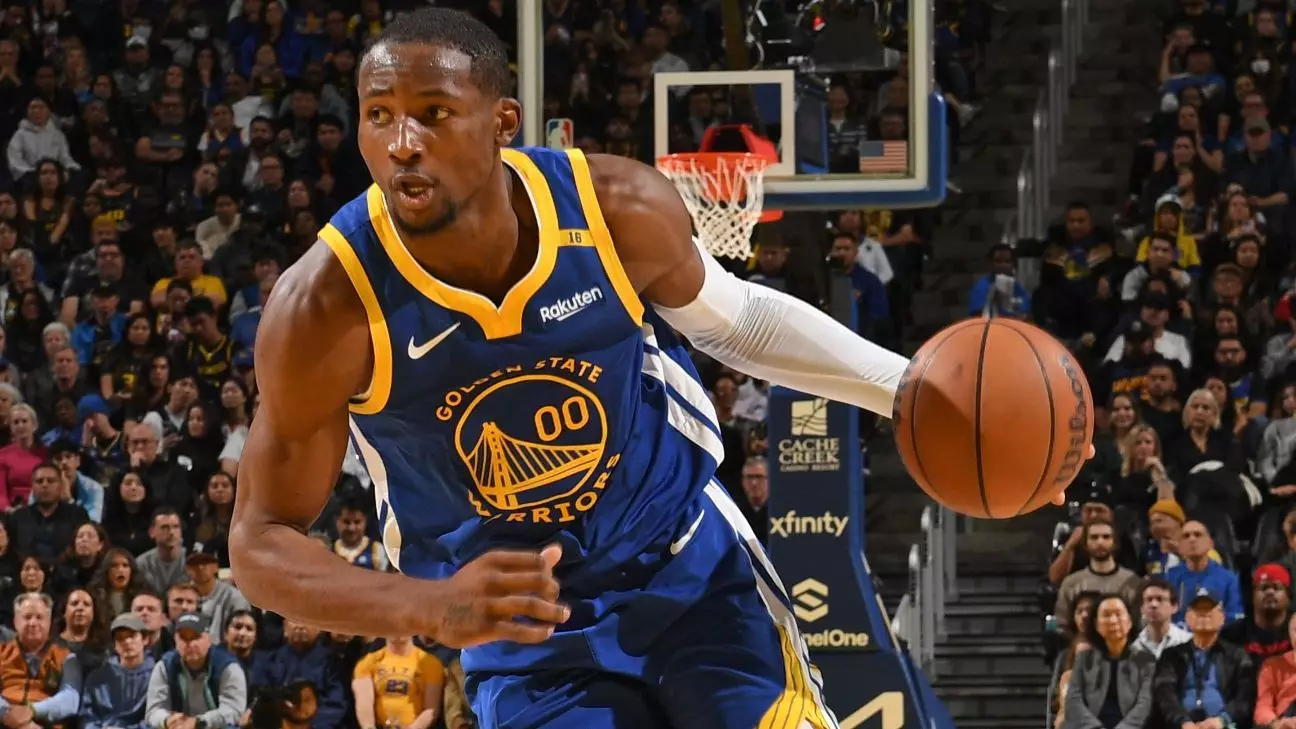In the complex landscape of NBA contract negotiations, few stories capture the tension and high stakes quite like that of Jonathan Kuminga’s ongoing standstill with the Golden State Warriors. This isn’t just about a young player seeking a better deal; it’s about fundamental questions of trust, value, and the future direction of a franchise that has long prided itself on stability and consistency. Kuminga’s reluctance to accept the current offers and the Warriors’ firm stance on their valuation illustrate a deeper rift that, if prolonged, could significantly influence the team’s roster moves and competitive ambitions.
While at first glance, negotiations might appear as routine business, they actually reveal a clash of philosophies. The Warriors’ front office appears determined to hold their ground, offering what they deem a fair, competitive deal—yet Kuminga’s camp is looking elsewhere, seeking more stability and a clearer pathway to a meaningful role. This impasse underscores a critical question: How much is a team willing to invest in a young player whose ceiling remains partly unproven but whose potential is undeniably promising? The current deadlock hints at a broader trend where teams are becoming more cautious, especially in a market hindered by limited cap space and cautious franchise thinking.
Kuminga’s hesitation to accept a one-year qualifying offer that grants him the maximum flexibility and control demonstrates his desire for more security and certainty about his future. Conversely, the Warriors prefer to avoid locking into long-term commitments prematurely, opting instead for strategic flexibility that could serve them well in an unpredictable market. This divergence is emblematic of a new era in NBA negotiations, where control over one’s career is not merely financial but deeply rooted in long-term stability and prominent roles.
Market Dynamics: The Cold Shoulder of Restricted Free Agency
What makes Kuminga’s situation particularly compelling—and perhaps perplexing—is the sluggish market for restricted free agents in this summer’s NBA landscape. Many teams, grappling with tight cap space and cautious spending, have refrained from aggressively pursuing new signings or trades. As a result, Kuminga’s expected value has struggled to find acknowledgment from others outside of the Warriors’ negotiating table.
The Warriors, aware of this environment, believed their most recent offer was competitive, even optimistic, aiming to validate Kuminga’s emerging talent. Yet, rejection persists, driven perhaps by the young forward’s desire for a more prominent role rather than just the safety of a guaranteed contract. With the league’s scarcity of available cap space and the reluctance of teams like Phoenix and Sacramento to part with valuable assets, Kuminga finds himself in a limbo—caught between what he perceives as his worth and a market that is largely silent.
Meanwhile, the Warriors’ steadfast stance on demanding a first-round pick in any sign-and-trade makes the process even more complicated. With teams like Phoenix lacking draft capital, the opportunity for a mutually beneficial deal diminishes. Kuminga’s camp is exploring options, including sign-and-trade deals and utilizing the qualifying offer, which grants him flexibility but comes with significant trade-offs. Such strategies demonstrate just how much is at stake, not only financially but in terms of leverage and long-term control.
This market stagnation isn’t just a temporary phenomenon; it signals a more cautious, risk-averse approach across the league. For Kuminga, this environment necessitates patience and strategic thinking—yet, for the Warriors, it underscores an urgent need to resolve their internal uncertainty to move forward.
The Broader Implications for the Warriors’ Strategy
The ongoing saga with Kuminga reflects a broader narrative about the Warriors’ current offseason priorities. While they are reportedly targeting veteran players like Al Horford and adding valuable bench pieces such as De’Anthony Melton and Seth Curry, their ultimate focus remains on resolving their internal roster puzzle. Kuminga’s decision will reverberate beyond his individual career; it influences whether the Warriors can pursue their broader strategic objectives or remain immobilized by internal disagreements.
Coach Steve Kerr’s direct engagement with Kuminga signals a team that recognizes the player’s potential importance, especially given his impressive playoff performances against Minnesota. The coaching staff understands that Kuminga provides not just scoring but also athletic versatility that could help sustain Golden State’s competitiveness. Yet, the young forward’s desire for a more prominent role—rather than a supplementary one—puts the Warriors in a difficult position: balancing respect for his ambitions against their roster-building framework rooted in veteran stability.
Furthermore, Kuminga’s willingness to accept the qualifying offer instead of a multi-year deal reflects a strategic choice emphasizing long-term control over immediate financial gain. It speaks to a broader generational shift where younger players are valuing autonomy and flexibility over guaranteed riches. For the Warriors, this trend could either be a potential risk—if Kuminga’s value rises significantly—or an opportunity to build their team around a developing core that includes him.
Ultimately, the unresolved nature of this negotiation demands patience—something both sides must exercise. The Warriors, mindful of their other offseason plans, are consciously holding back on other personnel moves, hoping to avoid making rash decisions until Kuminga’s future is clear. Whether this strategic patience pays off depends on Kuminga’s willingness to compromise and the league’s willingness to open up opportunities in an increasingly cautious market.
In a league where internal harmony and roster flexibility are key to sustained success, Kuminga’s situation exemplifies how a single unresolved contract can cascade into larger organizational dilemmas. For the Warriors, navigating this delicate balance will define how effectively they can retain their competitive edge and shape the franchise’s future trajectory.


Leave a Reply